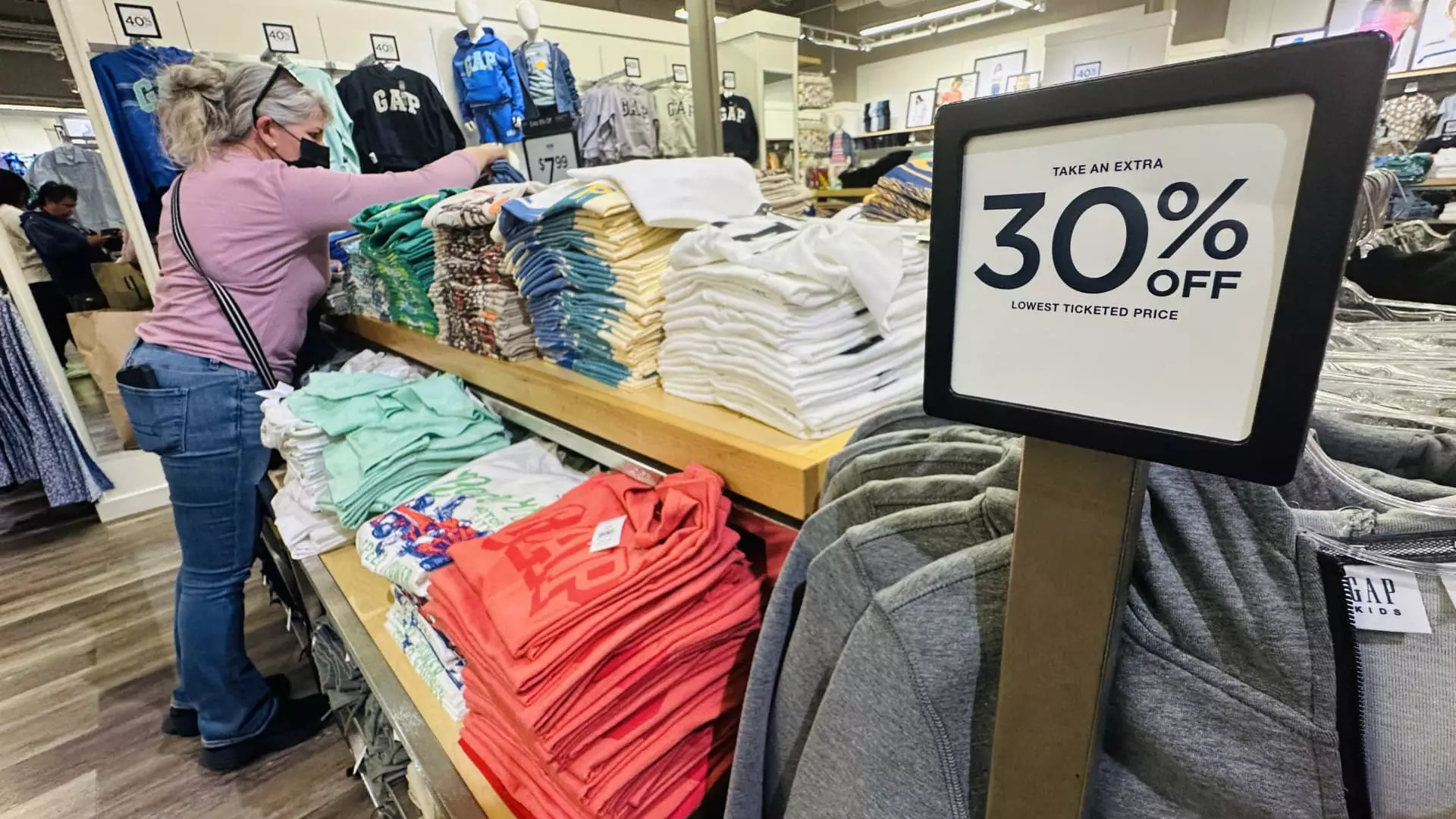The apparel industry in the United States is facing an impending catastrophe that could redefine how consumers shop for clothing and footwear. New tariffs proposed under current trade policies could unleash a staggering 64% increase in apparel prices within a short timeframe, according to projections from the Yale University Budget Lab. As a country that imports a massive 97% of its clothing—primarily from China and Vietnam—the implications of these tariffs are nothing short of alarming. This isn’t merely an isolated financial issue; it’s a deeply systemic problem that resonates through the lives of everyday consumers, particularly those already struggling financially.
High Prices, High Stakes: The Impact on Consumers
As importers grapple with escalating costs due to tariffs, it’s the consumers who ultimately bear the brunt of these taxes. The American Apparel & Footwear Association has articulated this pressing concern, calling the current tariff structure an unsustainable tax on U.S. imports. For low- and middle-income families, these price hikes are more than just numbers—they translate into real hardships, forcing families to rethink their clothing budgets and shopping habits. A startling three-quarters of consumers have reportedly adjusted their purchasing behavior, opting for secondhand options or cheaper alternatives. This represents not just a shopping shift, but a significant change in consumer mentality as people increasingly prioritize affordability over brand loyalty.
Shifting Towards Secondhand: A New Consumer Paradigm
With rising costs, many consumers are now turning to thrift shops and secondhand markets, indicating a shift away from traditional retail avenues. This change is not just driven by economic necessity; it underscores a broader cultural transformation in how people perceive value in fashion. Remarkably, research indicates that more than 50% of respondents are considering purchasing secondhand goods or local alternatives as a direct consequence of tariff-induced price increases.
This phenomenon presents an interesting paradox: while tariffs aim to protect domestic production, they concurrently cultivate a thriving secondhand economy. Entrepreneurs in the resale market stand to gain immensely from these shifting consumer behaviors, as they provide a pathway for individuals to fulfill their fashion desires without succumbing to inflated prices. This sector is projected to expand significantly in the coming years, potentially accounting for 8% of total retail by 2029, according to OfferUp’s analysis.
The Threat of Counterfeit Goods
However, this landscape is not without its challenges. The rising tariffs also create fertile ground for counterfeit goods to infiltrate the market. Experts warn that as authentic goods become more expensive, the proliferation of knock-offs will likely accelerate, particularly in an environment where the demand for affordable options is high. The agility of counterfeiters means that, even as tariffs discourage traditional imports, new pathways for cheap, imitation products are bound to emerge.
The discontinuation of the de minimis loophole—which previously allowed low-value imports to enter the U.S. duty-free—adds another layer of complexity. While aimed at curbing the flow of cheaper goods, this policy could paradoxically lead to greater challenges in authenticity verification, making it even harder for consumers to discern genuine products in an increasingly cluttered market.
Consumer Resilience: Shopping Strategies in a Turbulent Market
The resilience of consumers is undeniably impressive in the face of such daunting challenges. Reports indicate that nearly 67% of shoppers plan to alter their purchasing habits, with many seeking out thrift stores or employing more strategic shopping tactics. This adaptability showcases a significant evolution in consumer behavior, as individuals become more awareness-driven and financially savvy.
Brand loyalty is being replaced by a scrutiny of value for money. Likewise, the fashion industry is being prompted to reconsider its reliance on foreign manufacturing, given the increasingly difficult environment that global trading poses. The pressure cooker of tariffs may eventually force American brands to rethink their strategies, catalyzing a potential renaissance in domestic production.
Uncertain Futures: The Apparel Industry at a Crossroads
As the apparel industry braces itself for an uncertain future, the potential for change is palpable. For brands that can adapt to the new market realities, the path ahead could be paved with opportunities for redefining consumer engagement. However, for those unwilling to evolve alongside their consumers, the fallout may be severe. The stage is set not only for a shift in how consumers purchase clothing but also for a rethinking of the entire retail landscape, leading to a transformative period that could upend traditional norms in fashion.
As we hover at the crossroad of economic pressures and evolving consumer preferences, the choices made today will undoubtedly dictate the trajectory of the apparel industry in the coming years. How brands respond to this unfolding economic reality can create ripples that affect everything from affordability to ethical sourcing practices, setting the tone for the future of fashion. With so many factors in flux, the apparel industry stands as a compelling case study of resilience, adaptation, and the inexorable march of change.

